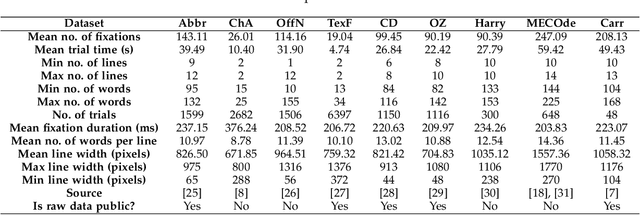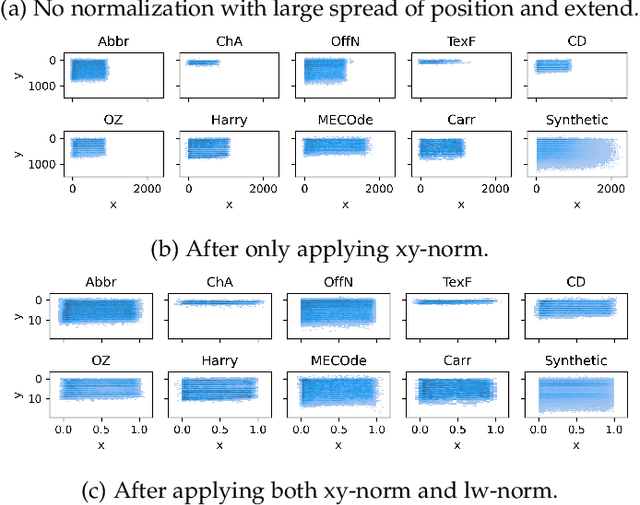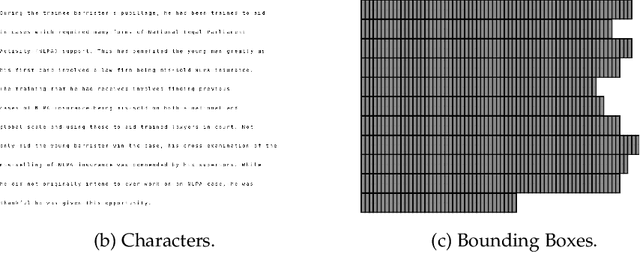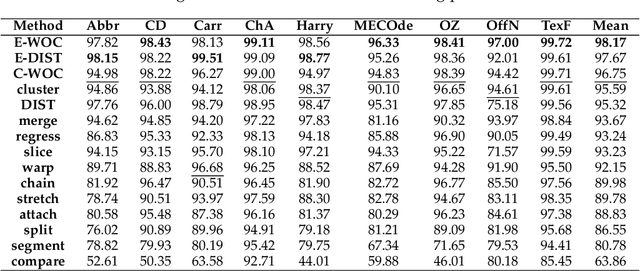Thomas M. Mercier
Dual input stream transformer for eye-tracking line assignment
Nov 10, 2023



Abstract:We introduce a novel Dual Input Stream Transformer (DIST) for the challenging problem of assigning fixation points from eye-tracking data collected during passage reading to the line of text that the reader was actually focused on. This post-processing step is crucial for analysis of the reading data due to the presence of noise in the form of vertical drift. We evaluate DIST against nine classical approaches on a comprehensive suite of nine diverse datasets, and demonstrate DIST's superiority. By combining multiple instances of the DIST model in an ensemble we achieve an average accuracy of 98.5\% across all datasets. Our approach presents a significant step towards addressing the bottleneck of manual line assignment in reading research. Through extensive model analysis and ablation studies, we identify key factors that contribute to DIST's success, including the incorporation of line overlap features and the use of a second input stream. Through evaluation on a set of diverse datasets we demonstrate that DIST is robust to various experimental setups, making it a safe first choice for practitioners in the field.
Solar Irradiance Anticipative Transformer
May 29, 2023



Abstract:This paper proposes an anticipative transformer-based model for short-term solar irradiance forecasting. Given a sequence of sky images, our proposed vision transformer encodes features of consecutive images, feeding into a transformer decoder to predict irradiance values associated with future unseen sky images. We show that our model effectively learns to attend only to relevant features in images in order to forecast irradiance. Moreover, the proposed anticipative transformer captures long-range dependencies between sky images to achieve a forecasting skill of 21.45 % on a 15 minute ahead prediction for a newly introduced dataset of all-sky images when compared to a smart persistence model.
 Add to Chrome
Add to Chrome Add to Firefox
Add to Firefox Add to Edge
Add to Edge